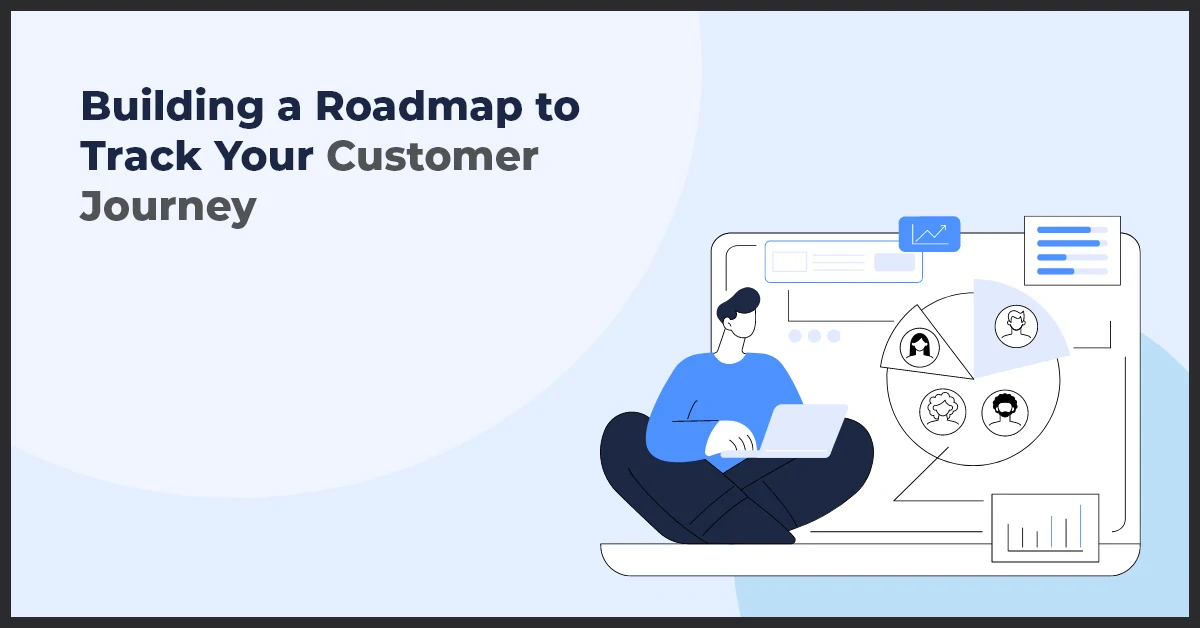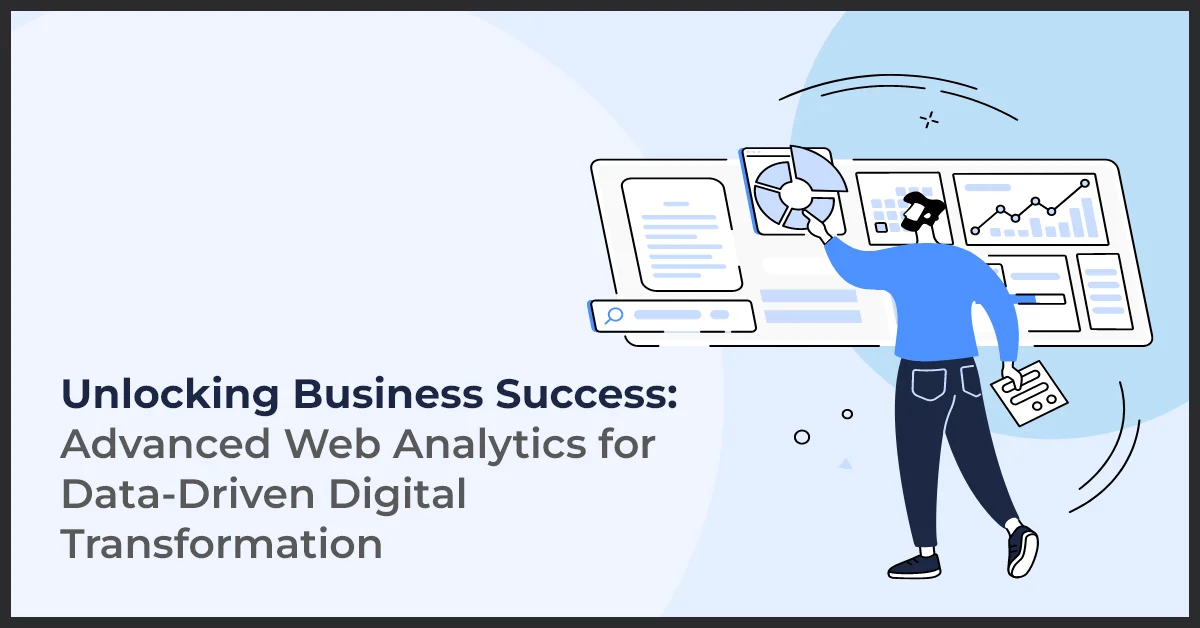Building a Roadmap to Track Your Customer Journey

Published on: September 29, 2022
Updated on: April 14, 2024
300 Views
- Web Analytics
6 min read
Marketing in today's dynamic environment means customizing your approach, tactics, and messaging for your target audience to become your customer and brand advocate. However, it gets tricky when you have multiple touchpoints instead of a linear path from awareness to acquisition to retention.
As many as 86% of shoppers use more than one touchpoint before purchasing, including blogs, reviews, social media, and other channels. Add to that a dodgy attribution model. Things look all over the place.
So, how do you stay on track? Begin by building an ideal customer journey roadmap.
Key Steps to Building a Perfect Customer Journey
1. Business Goals
The first step of this journey is to know where you want to go—establish your business goals. This will provide clarity to your sales and marketing team and serve as a roadmap to define the different stages of your customer journey.
You need to focus on the following to begin your marketing journey:
- Implement a performance management system
- Define every goal
- Outline key performance indicators
- Allocate appropriate resources
While doing so, implement SMART goals—Specific, Measurable, Achievable, Relevant, and Time-Bound. Having SMART goals keeps you on track and avoids confusion. For instance, your goal may be to increase organic traffic by 10% in two months via link-building and on-page optimization.
2. The Customer Journey
Once you have a clearer picture of your marketing goals, your next step should be to find ways to realize them. You need to set customers on a path that helps solve their pain points and achieve your goals. You must meet customers where they prefer and show how your product or service alleviates their problems.
The number of stages of your customer's journey varies depending on your business. To understand these stages better, you need business personas or ideal customer profiles. These help you comprehend your customers' buying process, their preferences, where they like to connect, and the kind of content and channel they prefer.
For example, a B2B company’s CEO would prefer engaging on LinkedIn or Twitter, while a B2C customer might like Youtube reels or Instagram.
Even though no two customer journeys are the same, every prospect goes through these signposts:
Awareness: Your audience accesses multiple channels such as social media, email, text marketing, YouTube, and other traditional media.
Research: This has two facets. Either the customer is looking for a specific product which leads them to stumble upon your brand through organic search, PPC, maps, directories, or "near me" in local SEO searches. Or, the prospect is reading blogs, articles, and reviews of your products on social media and other places to know more about your brand reputation. This stage is a prelude to the purchase/conversion stage.
Purchase: This is the step where the customer makes an online purchase from a website or an app.
Conversion: Based on the purchase and their experience with your product, they also put in their post-purchase expectations while comparing it to product reality for their social media posts or product review. Your buyer with a consistently positive shopping experience could become your brand advocate.
This is a simplified, basic way to build a customer journey. In reality, the process is very nuanced and complex. While your end goal may be to increase conversions by x%, there are micro-goals that you need to measure at every touchpoint including product pages, PPC, and contact forms.
Measuring these goals and ensuring they are aligned to the right stage is critical. You can track these goals through surveys, sales conversations, and customer service emails.
By aligning these micro goals with each step, you can determine how effectively your website can acquire customers. After all, websites are the front stores of brands, especially eCommerce companies.
3. Touchpoints and Critical Moments
Once the customer journey has been set up, you need to locate the touchpoints—where your audience interacts with your brand. Identifying it helps prospects achieve their goals and define your points for a better user experience.
When you map these touchpoints, you can observe the customer journey and get deeper insights into each stage.
Touchpoint one is your website. You need to monitor your traffic sources to gauge their efficacy. An embedded UTM parameter in the URLs is one of the many ways. Use UTM monitoring tools such as UTM.io, which make it easy to monitor all the codes simultaneously.
Apart from the website, other touchpoints include product pages, contact forms, pricing pages, and those identified by Google Analytics' Behavior Flow and Goal Flow Report.
The Behavior Flow report presents data of your website visitors flitting from one page to another. It helps in finding pages visited most often on your website. These are the other touchpoints that can help you segment your traffic and examine some of the steps of your customer journey.
As the name suggests, the Goal Flow report determines if your customers are achieving the goals that you have set. It helps you determine if your website visitors are leaving in the middle of the customer journey.
4. Customer Journey Map
Once you have identified all the touchpoints of a customer journey, create a visual map that lists them. It can be a simple grid with columns representing different stages of your customer journey along with questions, customer goals, touchpoints, and actions in the row column.
Here's what it would involve:
- List out each stage of your customer journey in columns.
- Ask all the possible questions that your customers may have during every step.
- List customers' goals under the questions, as it will connect the two directly.
- Delineate all the touchpoints in each stage of your customer journey below the customer goals.
- Finally, include all the actions you need to take for each stage to ensure your customers reach their goals.
5. Goal Completion Scores
Now that you have created the customer journey map, check whether your customers are achieving their goals on your website. You should also score the performance of these journeys to identify which customers require more attention and where your conversion efforts are not working.
6. Measure and Optimize
After you identify why your customers are not leading up to the purchase part of their journey, start prioritizing the touchpoints where customer journeys are completed and optimizing those where there is a significant dropoff.
For instance, the ideal First Response Time (FRT) for customer tickets is 4 hours, though the average FRT for the same is 7 hours 4 minutes. Once you know such roadblocks, you can optimize your marketing for better customer retention and experience.
Remember, your user experience is reflected in the actions of your customers. Once you examine these in detail, you can determine whether the touchpoints are working or not.
Conclusion
Your marketing journey needs not to be a meander. With quick establishing of goals, developing customer personas, identifying the right touchpoints, and optimizing them, make it the smooth ride you always hoped it to be.
Growth Natives can be your navigator in your marketing journey. Write to us today at info@growthnatives.com to know how!



